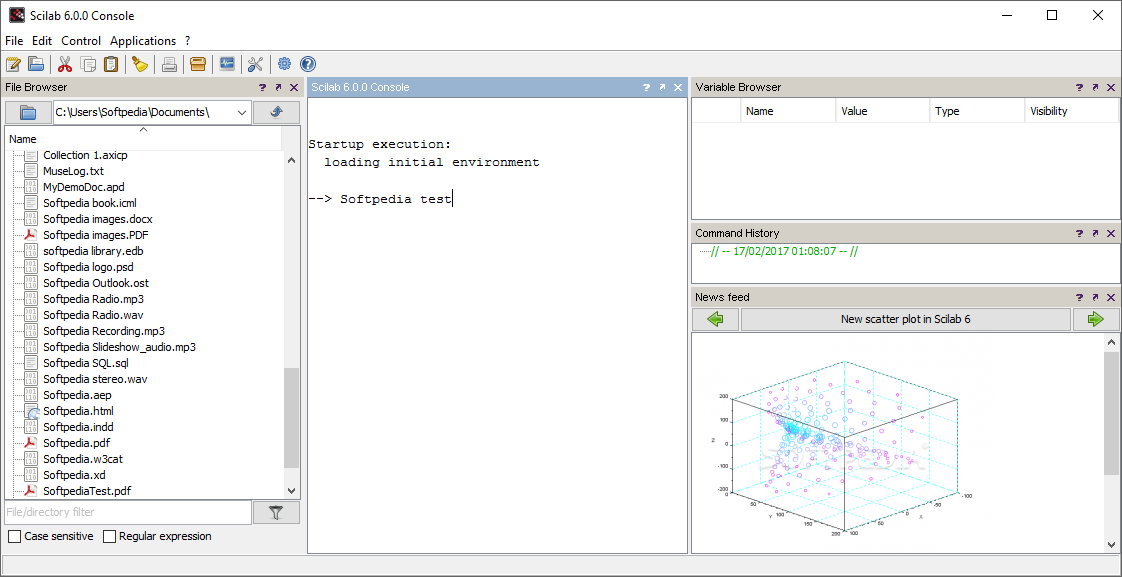

Only now the process becomes more involved because the sampling time is embedded in the gains. In order to implement on a computer, a discrete-time controller in the Z-domain must be transformed to its difference equation from as explained in our previous article Digital PID Controllers. The responses in Figure 6 depicts almost exact match between continuous and discrete PID control.įigure 6 response comparison from dpidsim2.zcos Conversion to PID Algorithm So to make a fair comparison, it takes some more work to construct a custom continuous-time PID controller according to (3) as shown in Figure 5.įigure 5 dpidsim2.zcos comparison with filter in the continuous-time PID controllerĭownload dpidsim2.zcos and run the simulation.

Of course, one would not expect a good match since the standard continuous-time PID block provided by Xcos does not have a filter in the derivative term. Notice that the step responses from the continuous (green) and discrete (red) PID controllers do not match, though they bear quite similar behavior.įigure 4 response comparison between the continuous and discrete PID Running the simulation yields the result in Figure 4. Then the second and third terms from the controller expression in (10) is inputted to the DLR blocks for integral and derivative as shown in Figure 2 and 3, respectively. Ts = 0.01 // must match sampling period used in simulation N = 20 įigure 1 dpidsim.zcos continuous versus discrete PID simulation Kp = 200 // these are values obtained from ZNFD tuning Note that the controller is assembled from Xcos gain blocks, and the DLR blocks from discrete-time systems palette.
#Scilab derivative download#
Add the second feedback loop with discrete-time PID controller as shown in the Xcos diagram in Figure 1, or download dpidsim.zcos. The plant consists of a robot joint driven by DC motor and a LPF at its input. We will use the setup in Figure 10 from our Module 4: PID Control. We want to simulate how this controller performs compared to its continuous-time version. Obviously for all the terms above, the sampling period affects the gains of integral and derivative terms.Īs an example, suppose we use backward Euler methods for both the integral and derivative terms, the resulting discrete-time PID controller is represented by Similarly, the derivative term in (3) can be discretized as Given a sampling period Ts ,the integral term Ki/s can be represented in discrete-from by There are commonly 3 variations to do so, by means of forward Euler, backward Euler, and trapezoidal methods. It is quite common to modify the derivative term to an LPF filter, to make it less noisyĪ straightforward way to discretize this controller is to convert the integral and derivative terms to their discrete-time counterpart. In this article we investigate such relationship on a commonly-used PID form.įor the continuous-time PID, we start with the so-called parallel form In practice, we may want to relate a chosen set of parameters in continuous-time, perhaps from simulation or some tuning rule, to its discrete-time representation. In that article, we simplify the matter by omitting the effect of sampling period on the PID parameters.
#Scilab derivative software#
In our previous article Digital PID Controllers, we discussed some basics of PID controller implementation as software algorithm on a computer. Part I: Discrete PID Gains as Functions of Sampling Time The apparent errors are caused by // cancellation in the floating point operations, so a " big " h is choosen.This content was kindly contributed by Dew Toochinda, the Scilab Ninja, and originally posted on A = rand ( 3, 3 ) p = rand ( 3, 1 ) w = 1 x = rand ( 3, 1 ) = derivative ( list ( f, A, p, w ), x, h = 1, H_form = ' blockmat ' ) // Since f(x) is quadratic in x, approximate derivatives of order=2 or 4 by finite // differences should be exact for all h~=0.

dx ) // A trivial example function y = f ( x, A, p, w ) y = x ' * A * x + p ' * x + w endfunction // with Jacobian and Hessean given by J(x)=x ' *(A+A ' )+p ', and H(x)=A+A '.
#Scilab derivative series#
for i = derivative ( F, x, order = i, H_form = ' blockmat ', Q = Q ) mprintf ( " order= %d \n ", i ) H, end p = 1 h = 1e-3 = derivative ( list ( G, p ), x, h, 2, H_form = ' hypermat ' ) H = derivative ( list ( G, p ), x, h, 4, Q = Q ) H // Taylor series example: dx = 1e-3 * = derivative ( F, x ) F ( x + dx ) F ( x + dx ) - F ( x ) F ( x + dx ) - F ( x ) - J * dx F ( x + dx ) - F ( x ) - J * dx - 1 / 2 * H * ( dx. Function y = F ( x ) y = endfunction function y = G ( x, p ) y = endfunction x = derivative ( F, x, H_form = ' blockmat ' ) n = 3 // form an orthogonal matrix : Q = qr ( rand ( n, n ) ) // Test order 1, 2 and 4 formulas.


 0 kommentar(er)
0 kommentar(er)
